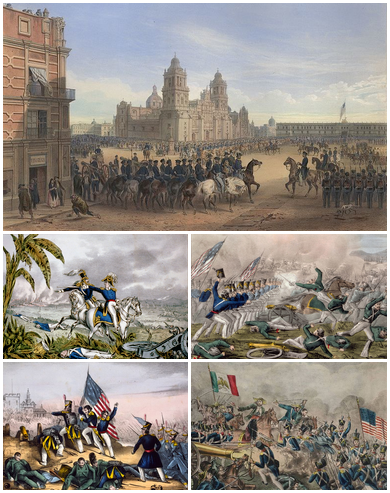|
Louis Georges Neumann
Louis Georges Neumann (22 October 1846 – 28 June 1930) was a French veterinary parasitologist who specialized in ticks. He was a professor at the Veterinary School in Toulouse. Neumann was born in Paris and was orphaned at a young age. He studied veterinary medicine at the Maisons-Alfort National Veterinary School in 1868 and joined the French army working at the cavalry school in Saumur. He became a lecturer at the École nationale vétérinaire de Toulouse in 1878 and a professor two years later. He worked on helminth parasites initially but soon started examining the arthropods starting with some interest in the mallophaga but he gave the greatest attention to the ticks and became a leading expert on them. He published numerous descriptions of new species and received collections from around the world. He revised the taxonomy of ticks in the family Ixodidae as part of the German zoological volumes ''Tierreich''. In 1896 he wrote a book on the biographies of famous veterinarian ... [...More Info...] [...Related Items...] OR: [Wikipedia] [Google] [Baidu] |
Saumur
Saumur () is a commune in the Maine-et-Loire department in western France. The town is located between the Loire and Thouet rivers, and is surrounded by the vineyards of Saumur itself, Chinon, Bourgueil, Coteaux du Layon, etc.. Saumur station has rail connections to Tours, Angers, La Roche-sur-Yon and Nantes. Toponymy First attested in the Medieval Latin form of ''Salmuri'' in 968 AD, the origin of the name is obscure. Albert Dauzat hypothesized a pre-Celtic unattested element ''*sala'' 'marshy ground' (''cf.'' Celtic ''salm'' 'which jumps and flows'), followed by another unattested element meaning "wall". Many places in Europe seem to contain ''*Sal(m)-'' elements, which may share Old European roots. History The Dolmen de Bagneux on the south of the town, is 23 meters long and is built from 15 large slabs of the local stone, weighing over 500 tons. It is the largest in France. The Château de Saumur was constructed in the 10th century to protect the Loire River c ... [...More Info...] [...Related Items...] OR: [Wikipedia] [Google] [Baidu] |
École Nationale Vétérinaire De Toulouse
' (National Veterinary School of Toulouse), is a veterinary school located in Toulouse, France. Established in 1825, it is also an institution of higher education and research and a teaching hospital. Overview Opened in 1828, the ENVT is the oldest ''Grande École'' in Toulouse, and the school has trained more than a quarter of all veterinarians in France – over 15,000 graduates. As a ''Grande École'', ENVT a French institution of higher education that is separate from, but parallel and connected to the main framework of the French public university system. Similar to the Ivy League in the United States, Oxbridge in the UK, and C9 League in China, ''Grandes Écoles'' are elite academic institutions that admit students through an extremely competitive process. ''Grandes Écoles'' typically they have much smaller class sizes and student bodies than public universities in France, and many of their programs are taught in English. International internships, study abroad opportuni ... [...More Info...] [...Related Items...] OR: [Wikipedia] [Google] [Baidu] |
Mallophaga
The Mallophaga are a possibly paraphyletic section of lice Louse ( : lice) is the common name for any member of the clade Phthiraptera, which contains nearly 5,000 species of wingless parasitic insects. Phthiraptera has variously been recognized as an order, infraorder, or a parvorder, as a resul ..., known as chewing lice, biting lice, or bird lice, containing more than 3000 species. These lice are external parasites that feed mainly on birds, although some species also feed on mammals. They infest both domestic and wild mammals and birds, and cause considerable irritation to their hosts. They have paurometabolis or incomplete metamorphosis. Characteristics About 3000 species of Mallophaga are in the world. They are easily identifiable by their heads, which are wider than their prothoraces. Species that feed on birds usually have two claws at the tip of each tarsus, while those that feed on mammals usually have only one claw. Mallophaga have mandibulate mouthparts wh ... [...More Info...] [...Related Items...] OR: [Wikipedia] [Google] [Baidu] |
Ixodidae
The Ixodidae are the family of hard ticks or scale ticks, one of the three families of ticks, consisting of over 700 species. They are known as 'hard ticks' because they have a scutum or hard shield, which the other major family of ticks, the 'soft ticks' ( Argasidae), lack. They are ectoparasites of a wide range of host species, and some are vectors of pathogens that can cause human disease. Description They are distinguished from the Argasidae by the presence of a scutum. In both the nymph and the adult, a prominent gnathosoma (or capitulum, mouth and feeding parts) projects forward from the animal's body; in the Argasidae, conversely, the gnathosoma is concealed beneath the body. They differ, too, in their lifecycle; Ixodidae that attach to a host bite painlessly and are generally unnoticed, and they remain in place until they engorge and are ready to change their skin; this process may take days or weeks. Some species drop off the host to moult in a safe place, whereas ot ... [...More Info...] [...Related Items...] OR: [Wikipedia] [Google] [Baidu] |
Alcide Railliet
Louis-Joseph Alcide Railliet (also known as Alcide Railliet, born 11 March 1852 at La Neuville-lès-Wasigny in the Ardennes – died 25 December 1930) was a French veterinarian and helminthologist. Professor at the Veterinary School of Alfort, he is considered one of the founders of modern parasitology and wrote several books of veterinary parasitology. He chaired the Société zoologique de France in 1891. He was a member of the French Académie Nationale de Médecine, from 29 December 1896 to his death. He received the Legion of Honor. Tributes Railliet's name is honoured by several genera: '' Raillietia'' (Acari), '' Raillietina'' (Cestodes), '' Raillietascaris'', '' Raillietnema'' and '' Raillietstrongylus'' (Nematodes), '' Raillietiella'' (Pentastomida), and the Acari family Raillietiidae. Numerous species were named after Railliet, such as ''Amidostomum raillieti, Angiocaulus raillieti, Aspidodera raillieti, Conoweberia raillieti, Eucoleus raillieti, Haemostrongylus ra ... [...More Info...] [...Related Items...] OR: [Wikipedia] [Google] [Baidu] |
George Nuttall
George Henry Falkiner Nuttall FRS (5 July 1862 – 16 December 1937) was an American-British bacteriologist who contributed much to the knowledge of parasites and of insect carriers of diseases. He made significant innovative discoveries in immunology, about life under aseptic conditions, in blood chemistry, and about diseases transmitted by arthropods, especially ticks. He carried out investigations into the distribution of Anopheline mosquitoes in England in relation to the previous prevalence of malaria there. With William Welch he identified the organism responsible for causing gas gangrene. Life Nuttall was born in San Francisco, the second of three sons and two daughters of Robert Kennedy Nuttall, a British doctor who had migrated to San Francisco in 1850, and Magdalena, daughter of John Parrott of San Francisco. In 1865 the family moved to Europe. The children were educated in England, France, Germany and Switzerland. As a result, Nuttall spoke German, French, Italian ... [...More Info...] [...Related Items...] OR: [Wikipedia] [Google] [Baidu] |
1846 Births
Events January–March * January 5 – The United States House of Representatives votes to stop sharing the Oregon Country with the United Kingdom. * January 13 – The Milan–Venice railway's bridge, over the Venetian Lagoon between Mestre and Venice in Italy, opens, the world's longest since 1151. * February 4 – Many Mormons begin their migration west from Nauvoo, Illinois, to the Great Salt Lake, led by Brigham Young. * February 10 – First Anglo-Sikh War: Battle of Sobraon – British forces defeat the Sikhs. * February 18 – The Galician slaughter, a peasant revolt, begins. * February 19 – United States president James K. Polk's annexation of the Republic of Texas is finalized by Texas president Anson Jones in a formal ceremony of transfer of sovereignty. The newly formed Texas state government is officially installed in Austin. * February 20– 29 – Kraków uprising: Galician slaughter – Polish nationalists stage an uprising in the Free City o ... [...More Info...] [...Related Items...] OR: [Wikipedia] [Google] [Baidu] |
1930 Deaths
Year 193 ( CXCIII) was a common year starting on Monday (link will display the full calendar) of the Julian calendar. At the time, it was known as the Year of the Consulship of Sosius and Ericius (or, less frequently, year 946 ''Ab urbe condita''). The denomination 193 for this year has been used since the early medieval period, when the Anno Domini calendar era became the prevalent method in Europe for naming years. Events By place Roman Empire * January 1 – Year of the Five Emperors: The Roman Senate chooses Publius Helvius Pertinax, against his will, to succeed the late Commodus as Emperor. Pertinax is forced to reorganize the handling of finances, which were wrecked under Commodus, to reestablish discipline in the Roman army, and to suspend the food programs established by Trajan, provoking the ire of the Praetorian Guard. * March 28 – Pertinax is assassinated by members of the Praetorian Guard, who storm the imperial palace. The Empire is auct ... [...More Info...] [...Related Items...] OR: [Wikipedia] [Google] [Baidu] |







